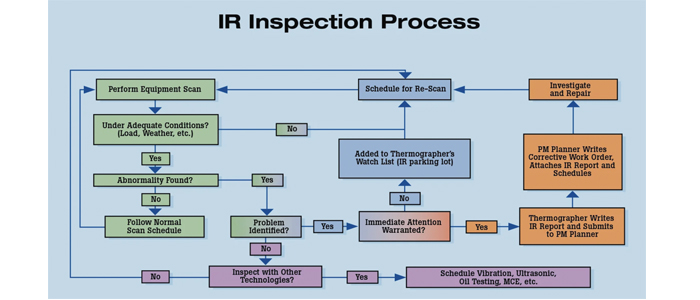- +61 7 3374 2877
- Email Us
Heat is often an early symptom of equipment damage or malfunction, making it important to monitor in preventive maintenance programs. Using thermal imaging preventive maintenance regularly to check the temperature of critical equipment allows you to track operating conditions over time and quickly identify unusual readings for further thermography inspections.
By monitoring equipment performance and scheduling maintenance when needed, these facilities reduce the likelihood of unplanned downtime due to equipment failure, spend less on “reactive” maintenance fees and equipment repair costs, and extend the lifespan of machine assets.
Here’s the trick: to save money, preventive maintenance should not create excessive additional maintenance efforts. The goal is to transition maintenance resources away from emergency repairs and into scheduled inspections of key equipment. Inspections take less time than repairs, especially if done with a thermal camera.
RETURN ON INVESTMENT AND COST SAVINGS
Studies by the Federal Energy Management Program (FEMP), estimate that a properly working preventive maintenance program can lead to savings, to the tune of 30 to 40%. Other independent surveys show that, on average, sustaining an industrial preventive maintenance program results in savings:
You can share this information with your supervisor or clients. To calculate the savings at a facility, estimate the costs of unplanned equipment failures. Then factor in human resources, costs for parts, and lost revenue from specific production lines. It would be wise for the maintenance manager to keep a record of machine asset availability, production output, and the distribution of maintenance dollars and total maintenance costs over time. Those numbers will help you calculate the return on your thermal imaging and maintenance investment.

INTEGRATING THERMOGRAPHY INTO PREVENTIVE MAINTENANCE
Thermal cameras are often the first inspection tool a technician thinks to use as part of their preventive maintenance program. They can swiftly measure and compare heat signatures for all equipment on the inspection route, all without interrupting operations.
If the temperature is noticeably different from previous readings, facilities can then use other maintenance technologies—vibration, motor circuit analysis, airborne ultrasound, and lube analysis—to investigate the source of the problem and determine the next course of action.
For best results, integrate all your maintenance technologies into the same computer system, so that they share the same equipment lists, histories, reports and work orders. Once the infrared data is correlated with data from other technologies, the actual operating condition of all assets can be reported in an integrated format.
Applications
Inspection process